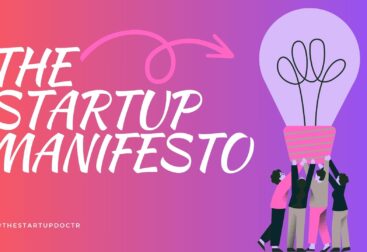As a product manager, you’re often at the crossroads of pivotal decisions that can shape the direction of your product and, ultimately, your company’s success. Balancing competing priorities, managing stakeholder expectations, and driving product vision requires a blend of data-driven analysis, team collaboration, and strategic foresight. This article explores how to navigate these tough choices with confidence, drawing on real-world examples, case studies, and practical insights.
Gather Data
Effective decision-making begins with gathering the right data. This involves quantitative data such as user analytics, market research, and financial metrics, as well as qualitative insights from user feedback, customer interviews, and competitive analysis.
Case Study: Airbnb
Airbnb’s decision to expand into the experiences market was driven by extensive data collection. They analysed user behaviour on their platform and found that travellers were seeking more than just accommodations; they wanted unique local experiences. By leveraging data from customer surveys and analysing booking patterns, Airbnb identified a clear demand for curated experiences. This data-backed insight led to the successful launch of Airbnb Experiences, which has become a significant revenue stream for the company.
Consult Team
A product manager’s role is inherently collaborative. Consulting your team helps you tap into diverse perspectives and expertise. Your engineering team can provide technical insights, your marketing team can offer customer and market trends, and your sales team can share firsthand customer feedback.
Example: Slack
Slack, the popular messaging platform, places a strong emphasis on team consultation. When faced with the decision to pivot from a gaming company to a business communication tool, CEO Stewart Butterfield involved his entire team in the decision-making process. This inclusive approach ensured that diverse viewpoints were considered, leading to a well-rounded strategy that addressed both technical feasibility and market potential.
Weigh Trade-offs
Every decision involves trade-offs. Balancing short-term gains against long-term goals, customer needs against technical constraints, or innovation against stability requires careful consideration.
Example: Apple
Apple’s decision to remove the headphone jack from the iPhone 7 was met with mixed reactions. However, the trade-off was clear: eliminating the jack allowed for a thinner design, improved water resistance, and better battery life. While it required customers to adapt to new wireless or adapter solutions, the long-term benefits aligned with Apple’s vision of a wireless future. By weighing the trade-offs, Apple made a bold decision that ultimately pushed the industry forward.
Prioritize Objectives
Prioritization is key to managing limited resources and achieving strategic goals. It involves ranking tasks and features based on their impact, feasibility, and alignment with overall business objectives.
Example: Spotify
Spotify’s product development is heavily guided by prioritization frameworks. When the company decided to launch Discover Weekly, a personalized playlist feature, they prioritized it based on its potential to enhance user engagement and retention. By focusing on this high-impact feature, Spotify successfully increased user satisfaction and differentiated itself in the competitive music streaming market.
Make Decisions
After gathering data, consulting your team, weighing trade-offs, and prioritizing objectives, it’s time to make the decision. Confidence in decision-making comes from a structured approach and the willingness to take calculated risks.
Case Study: Netflix
Netflix’s decision to pivot from DVD rentals to streaming was a bold move that required confident decision-making. Despite the risks, CEO Reed Hastings made the decision based on market trends, technological advancements, and a clear vision for the future of entertainment. This decision not only transformed Netflix but also revolutionized the entire entertainment industry.
Reflect and Learn
The final step in navigating tough decisions is reflecting on the outcomes and learning from them. This continuous improvement cycle helps refine your decision-making process and prepares you for future challenges.
Example: Google
Google’s approach to product development is iterative and reflective. The company’s practice of launching beta versions, collecting user feedback, and making continuous improvements exemplifies this. For instance, Google Maps has evolved significantly over the years through constant reflection and learning, incorporating user feedback to enhance features and usability.
Here’s What Else to Consider
Emotional Intelligence
Understanding and managing emotions, both your own and those of your team, can significantly impact decision-making. High emotional intelligence helps in navigating conflicts, building stronger relationships, and making more empathetic decisions.
Example: Microsoft
Satya Nadella’s leadership at Microsoft has been marked by a high level of emotional intelligence. By fostering a culture of empathy and collaboration, he has revitalized the company, driving innovation and growth. His approach to decision-making involves understanding the emotional and cultural impacts on employees and customers, leading to more thoughtful and effective outcomes.
Scenario Planning
Considering various scenarios and their potential outcomes helps in preparing for uncertainties. This involves envisioning different futures and planning how to respond to each.
Example: Tesla
Tesla’s scenario planning is evident in its approach to autonomous driving technology. By considering different regulatory environments, technological advancements, and public acceptance rates, Tesla has developed flexible strategies that allow it to adapt to various future scenarios, maintaining its competitive edge.
Gut Instinct
While data and analysis are crucial, intuition also plays a role in decision-making. Experienced product managers develop a sense of intuition based on their accumulated knowledge and experiences.
Example: Instagram
Kevin Systrom, co-founder of Instagram, relied on gut instinct when deciding to focus on simplicity and photo-sharing in the early stages of the app’s development. Despite limited data, his intuition about the market’s desire for a straightforward, visually-focused social platform proved to be spot on, leading to Instagram’s massive success.
Cross-Functional Collaboration
Effective decision-making often requires input from various departments. Cross-functional collaboration ensures that all perspectives are considered and that the decision aligns with the broader organizational strategy.
Example: Amazon
Amazon’s success is largely attributed to its culture of cross-functional collaboration. For instance, the development of the Amazon Echo involved teams from hardware, software, and AI working closely together. This collaborative approach ensured that the product was well-rounded, user-friendly, and technologically advanced.
Continuous Feedback Loop
Creating a continuous feedback loop with customers and stakeholders helps in making informed decisions and quickly adapting to changes.
Example: Dropbox
Dropbox uses a continuous feedback loop to improve its products. By regularly soliciting feedback from users and incorporating it into product updates, Dropbox ensures that its offerings remain relevant and user-centric. This approach has helped the company maintain a loyal customer base and stay competitive in the cloud storage market.
Navigating tough decisions as a product manager requires a balance of data-driven analysis, team collaboration, strategic prioritization, and reflective learning. By gathering comprehensive data, consulting your team, weighing trade-offs, prioritizing objectives, making informed decisions, and continuously reflecting and learning, you can navigate the complexities of product management with confidence. Real-world examples from companies like Airbnb, Slack, Apple, Spotify, Netflix, Google, Microsoft, Tesla, Instagram, Amazon, and Dropbox illustrate these principles in action, providing valuable insights into effective decision-making in the dynamic world of product management.












